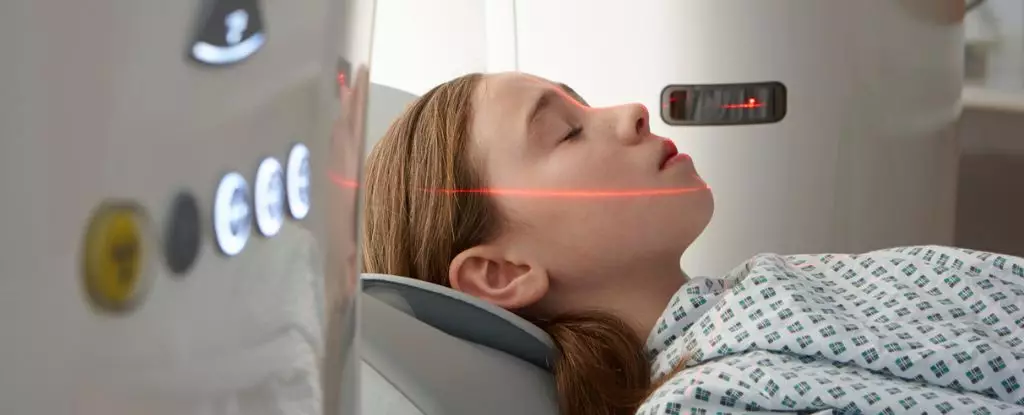In the landscape of modern medicine, computed tomography (CT) scans have emerged as indispensable tools. They offer unparalleled imaging capabilities that allow healthcare providers to diagnose a multitude of conditions accurately and swiftly. It’s a testament to technological advancement that CT scans have become staples in the protocols of many medical practices. However, this surge in usage—over 30% growth since 2007—raises pertinent questions regarding their safety and the potential long-term consequences for patients. The juxtaposition of life-saving utility and the shadow of risk calls for a thorough examination of CT scans’ role in contemporary healthcare.
The Controversial Link Between Radiation and Cancer
The crux of the debate lies in understanding the association between ionizing radiation, emitted during CT scans, and cancer risk. While the consensus is that the risk at any single exposure level is minimal, scientists caution against complacency. Emerging data indicates that the cumulative effect of frequent CT scans may contribute to a significant public health concern, with projections suggesting that they could account for a staggering 5% of new cancer diagnoses in the United States. This statistic, while theoretical, draws parallels to widely recognized risk factors like alcohol consumption. Herein lies a conflict: how do we weigh the apparent risks against the undeniable benefits these scans provide when selecting treatment routes?
The Theoretical Risks Based on Historical Data
Understanding the implications of CT scans necessitates a closer look at historical data. Existing research, primarily based on survivors from atomic bomb detonations and those impacted by nuclear incidents, forms the backbone of current risk assessments. For instance, studies of Hiroshima survivors, many of whom received radiation doses equivalent to the accumulation of three or more CT scans, indicated slight but statistically noteworthy increases in cancer incidence over time. However, this connection remains speculative when applied to CT scans, given that differences in radiation dose and exposure duration complicate direct comparisons.
Recent analyses, conducted on data from numerous hospitals, seek to refine this understanding. By accounting for various factors—device type, scan duration, and patient morphology—the researchers aim to generate more precise estimations of radiological risk. It is clear that as we delve deeper into the specifics of radiation exposure, the conclusions about long-term health impacts become increasingly complex.
Who is Most at Risk?
While adults are the primary recipients of CT scans, recent findings raise alarms about certain demographics, particularly children and adolescents. With studies suggesting heightened susceptibility to radiation-induced cancers among younger individuals, concern mounts regarding the timing and necessity of such procedures. Infants under one year of age present the highest potential lifetime risk for specific cancers, such as thyroid cancer, notably more so among females. This information highlights a crucial and often overlooked facet: the need for a more cautious approach when considering imaging for vulnerable populations.
The Importance of Prudent Medical Practices
In the whirlwind of medical advancement, one must not lose sight of the guiding principle: “Primum non nocere,” or “first, do no harm.” Experts like Pradip Deb advocate for a thoughtful approach to imaging, emphasizing that unnecessary CT scans should be avoided when safer, radiation-free diagnostic options are available. This sentiment echoes the need for healthcare professionals to engage in a dialogue about the necessity and appropriateness of CT scans on a case-by-case basis.
Naomi Gibson adds another layer to this conversation, reinforcing that while vigilance around radiation exposure is essential, this should not dissuade clinically justified CT imaging. The challenge lies in establishing a balance that does not undermine the advancements in diagnosing and treating diseases while fostering an informed patient community that understands both the benefits and potential risks of these crucial diagnostic tools.
Closing Thoughts: Navigating the Future of CT Imaging
The evolving narrative surrounding CT scans and their associated risks necessitates a proactive stance from both the medical community and patients. As we harness the remarkable capabilities of this technology, we must remain acutely aware of the ethical implications tied to radiation exposure and healthcare decision-making. The ultimate goal is to retain the life-saving potential of CT scans while minimizing any unwarranted exposure to radiation. Collaborative efforts in research, public education, and clinical practice will be paramount in ensuring that the future of medical imaging remains both innovative and responsible, safeguarding the health of patients for generations to come.

